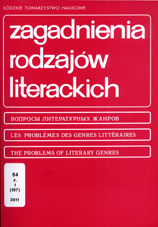Eastern European Theatre After the Collapse of the Berlin Wall (As Exemplified in Polish and German)
Eastern European Theatre After the Collapse of the Berlin Wall (As Exemplified in Polish and German)
Author(s): Karolina Prykowska-MichalakSubject(s): Literary Texts
Published by: Łódzkie Towarzystwo Naukowe
Summary/Abstract: In the twentieth century. the concept of Eastern Europe gained strong political connotations. Therefore, the question arises, if its culture and art are also performed in this manner? Marked by the Warsaw Pact and the Berlin Wall, the art became political, allusive, and ambiguous. This, however, lasted only until 1990. What changes have appeared after the fall of the eastern bloc? Has the art, so far hidden behind the Iron Curtain, opened itself for Western Europe and the rest of the world? How has it begun to derive from and use the past myths in order to analyze the present situation? Polish and German theater of the last eighteen years, which influence one another in a resonance manner, in my opinion serve as examples of political art. My presentation aims at showing the mechanisms of functioning of contemporary political theater that is not propaganda, but rather a part of contemporary aesthetics. The research made by French philosopher, Jacques Ranciere, proves that nowadays we do not separate political and art sphere, but we treat them as concurrent. Politics has a significant aesthetic dimension and provides a common background to what is given and possible also in theatre.
Journal: Zagadnienia Rodzajów Literackich
- Issue Year: 54/2011
- Issue No: 1
- Page Range: 257-268
- Page Count: 12
- Language: English

